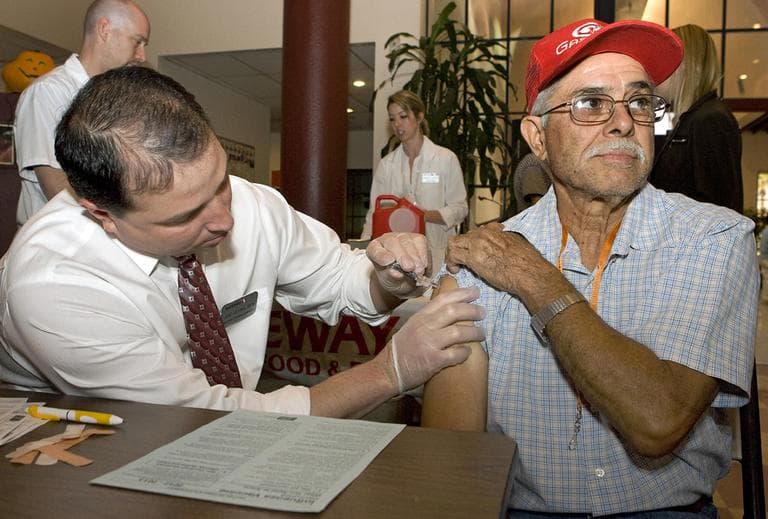Advertisement
Flu Cases Surge Nationwide

The flu season is upon us.
Rates of infection are unusually high for this time of year compared to past years. An early peak in infection rates may be one explanation - the flu season started early in November of 2012.
But it's not as bad as it may seem, according to Dr. William Schaffner, professor and chairman of the department of preventative medicine at Vanderbilt University.
"We had the H1N1 pandemic in 2009 and then mild years after," Dr. Schaffner told Here & Now's Robin Young. "This is the first year with what we might call normal levels of flu. So while it's more than last year, it's not that unusual."
The Centers for Disease Control (CDC) has said this year's flu vaccine is about 60 percent effective - which is not unusual - and is fairly well-matched to the prevalent flu strains this season.
CDC officials are urging anyone who has not already received a flu shot to get one.
There are two ways the vaccine can be administered, through a nasal spray or through a shot. Studies show that the nasal spray is marginally more effective for children, while shots are better for adults.
Vaccines usually protect against three strains of flu, according to Dr. Schaffner, but next year we may see vaccines that protect against four strains.
Guest:
- William Schaffner, professor of preventive medicine and chairman of Department of Preventive Medicine at Vanderbilt University's School of Medicine.
This segment aired on January 8, 2013.